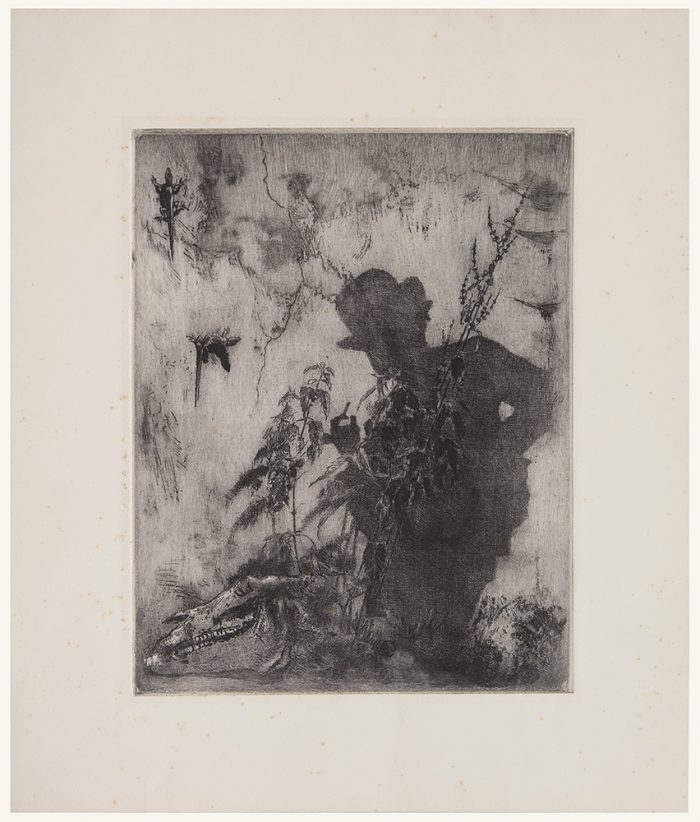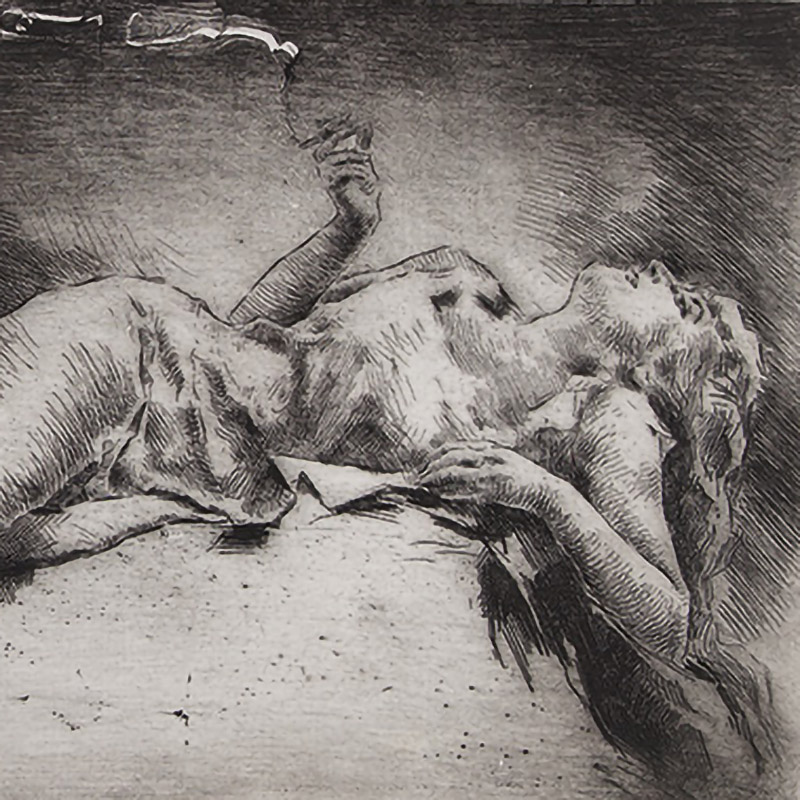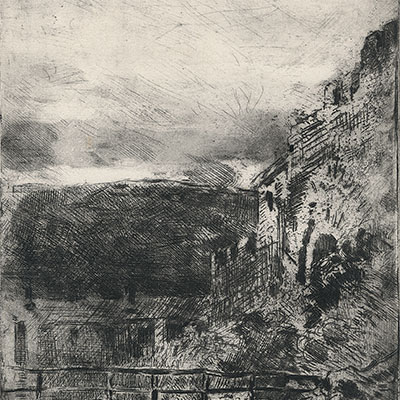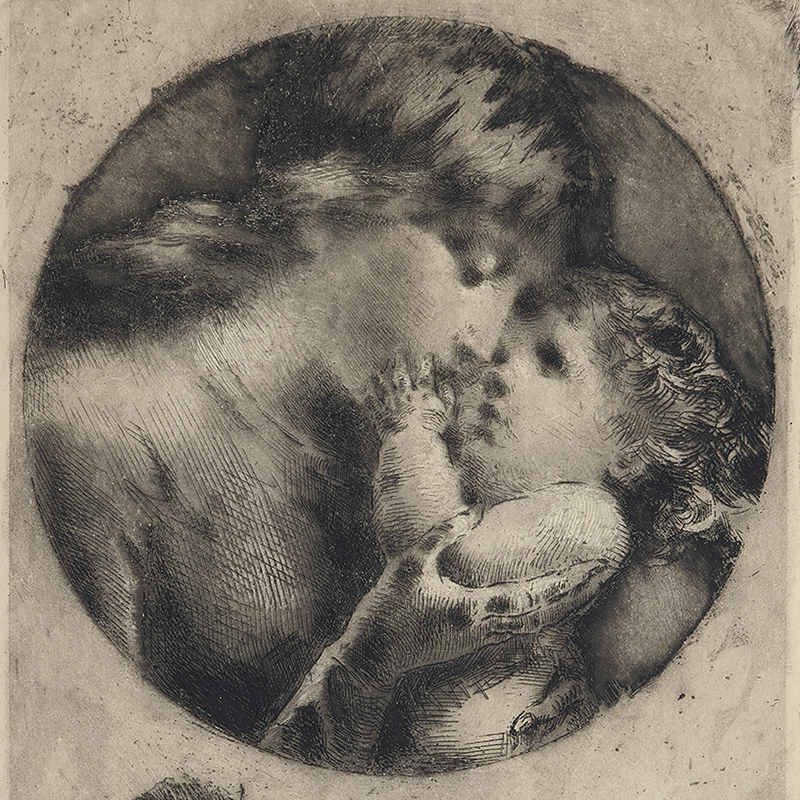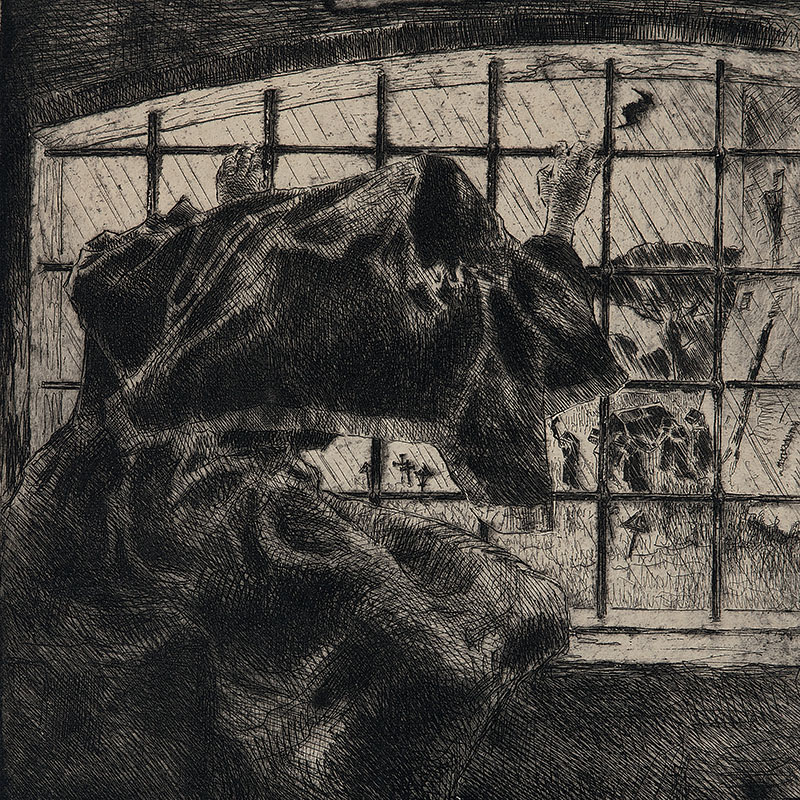Luigi Conconi
Milan 1852 - 1917
ante 1888
360 x 280 mm; sheet 508 x 429 mm
Signed LConconi working the film of ink left on the plate in wiping.
Mezzetti, 246; Bianchi-Ginex, no. 26
A fine impression, printed with black ink, working on the surface tone, on thick wove paper. The print is rich in monotypic effects, obtained by the artist working on the heavy film of ink left on the plate. In this way Conconi got special effects of light and shadow and put his signature in the composition. In very good condition, with large margins, minimal foxing
Conconi was the leading exponent of the acquaforte monotipata in Lombardy. With this technique the artist draws directly with the ink on the plate, before pulling it under the press. In this way every print has different characteristics from the others.
Conconi studied architecture at the Brera Academy and at the Polytechnic, becoming acquainted with the literary and artistic circles of the Scapigliatura; Tranquillo Cremona and Daniele Ranzoni influenced his early paintings. In the 1880s he moved from the Realism of Scapigliatura toward Symbolism. He received international recognition from awards in Paris in 1900 and in Munich in 1913. Conconi took care personally of the printing of almost all his own plates.
Information on the master
Conconi studied architecture at the Accademia di Brera and the Politecnico di Milano. He came into contact with members of the literary and artistic circles of the Scapigliatura – the Italian equivalent of the French Bohème– notably Tranquillo Cremona and Daniele Ranzoni, both of whom influenced his early paintings. In the 1880s Conconi moved from the Realism of Scapigliatura toward Symbolism. The awards he received in Paris in 1900 and Munich in 1913 led to his international recognition.
Conconi, who personally saw to the production of virtually all his plates, was the leading exponent in Lombardy of Acquaforte monotipata. This technique involved the artist drawing directly onto the ink covering the plate, prior to pulling the impression. In this way each resultant print has different characteristics.
Other works of the master
